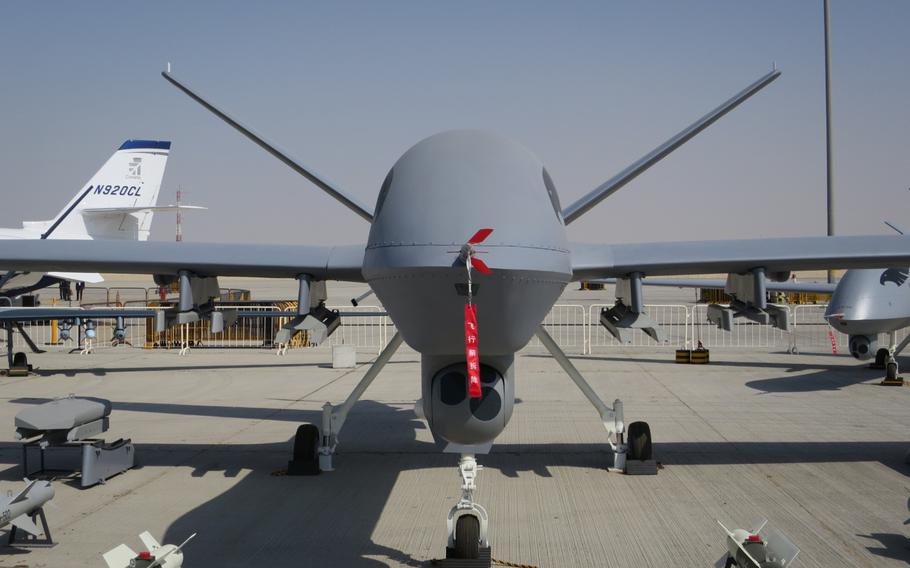
A Pterodactyl-1 at the 2017 Dubai Air Show. Serbia's military will receive Chinese-built Pterodactyl-1 armed drones in the coming months, marking the first time Chinese remotely piloted aircraft have been sold to a European country. (Mztourist)
Serbia’s military will receive Chinese-built armed drones in the coming months, marking the first time Chinese remotely piloted aircraft have been sold to a European country, officials said Tuesday.
Serbia will take delivery of nine Chengdu Pterodactyl-1 drones within six months, with a possible follow-on order of 15 more, media reports in Belgrade said.
China’s sale of the unmanned aircraft is believed to be its largest export of military equipment to Europe in recent decades, and marks Beijing’s most significant foray into a continent where armed forces have traditionally relied on U.S. and European weapon-makers.
Beijing has become increasingly economically engaged in Serbia and elsewhere in southeastern Europe as part of its global Belt and Road campaign, particularly in infrastructure projects such as roads, railways and ports.
Recent moves by China on or near NATO’s turf have attracted U.S. scrutiny. At U.S. European Command headquarters in Stuttgart, officials have expressed concern about China purchasing stakes in numerous European ports, and about China’s “polar silk road” Arctic ambitions.
There was no immediate comment from EUCOM on Tuesday about Serbia’s planned acquisition of the Chinese drones.
Serbia — which was heavily bombed by NATO during the Kosovo war in 1999 — is a leading candidate to join the European Union, but has also rejected the possibility of NATO membership. Instead, Belgrade has declared itself as a military-neutral nation, saying it wants to procure weapons and other military equipment from various suppliers, including the U.S., Russia, China and European nations.
“This (sale) will greatly strengthen the Serbian military, which will gain capabilities it has not had in the past,” Defense Minister Aleksandar Vulin said in an interview Tuesday on state-owned television. Vulin spoke just a day after hosting a high-level Chinese military delegation led by Gen. Zhang Youxia, vice chairman of the powerful Central Military Commission in Beijing.
The Pterodactyl-1 combat drones, which look remarkably similar to the U.S.-built MQ-9 Reaper and MQ-1 Predator family of unmanned aerial vehicles, have the ability to scout, discover targets during the day and at night, and strike them with laser-guided bombs and missiles, analysts said.
“The Chinese have very good pilot-less aircraft, probably second only to the United States,” Belgrade military analyst Miroslav Lazanski said in a TV interview. “They obviously copied some American systems (but) Chinese drones are very effective and very cheap.”
While the cost of the drones was an important consideration for Serbia’s cash-strapped military, the Chinese drones also offer “top” performance, he said.
In the past two years, Serbia’s military has obtained dozens of U.S. armored Humvee vehicles, nine Airbus H145M armed helicopters, and six second-hand MiG-29 jet fighters from Russia. The drones will be the first significant Chinese weapons system in its inventory.
The Pterodactyls, also known in China as the Wing Loong, have been ordered by or are in service in a number of Asian and African countries, including the United Arab Emirates, Nigeria, Pakistan, Indonesia Kazakhstan, Saudi Arabia, Uzbekistan and Egypt. They have been used in airstrikes against Islamic State militants in Libya and Egypt’s Sinai Peninsula, and one was recently shot down over Yemen by Houthi rebels.